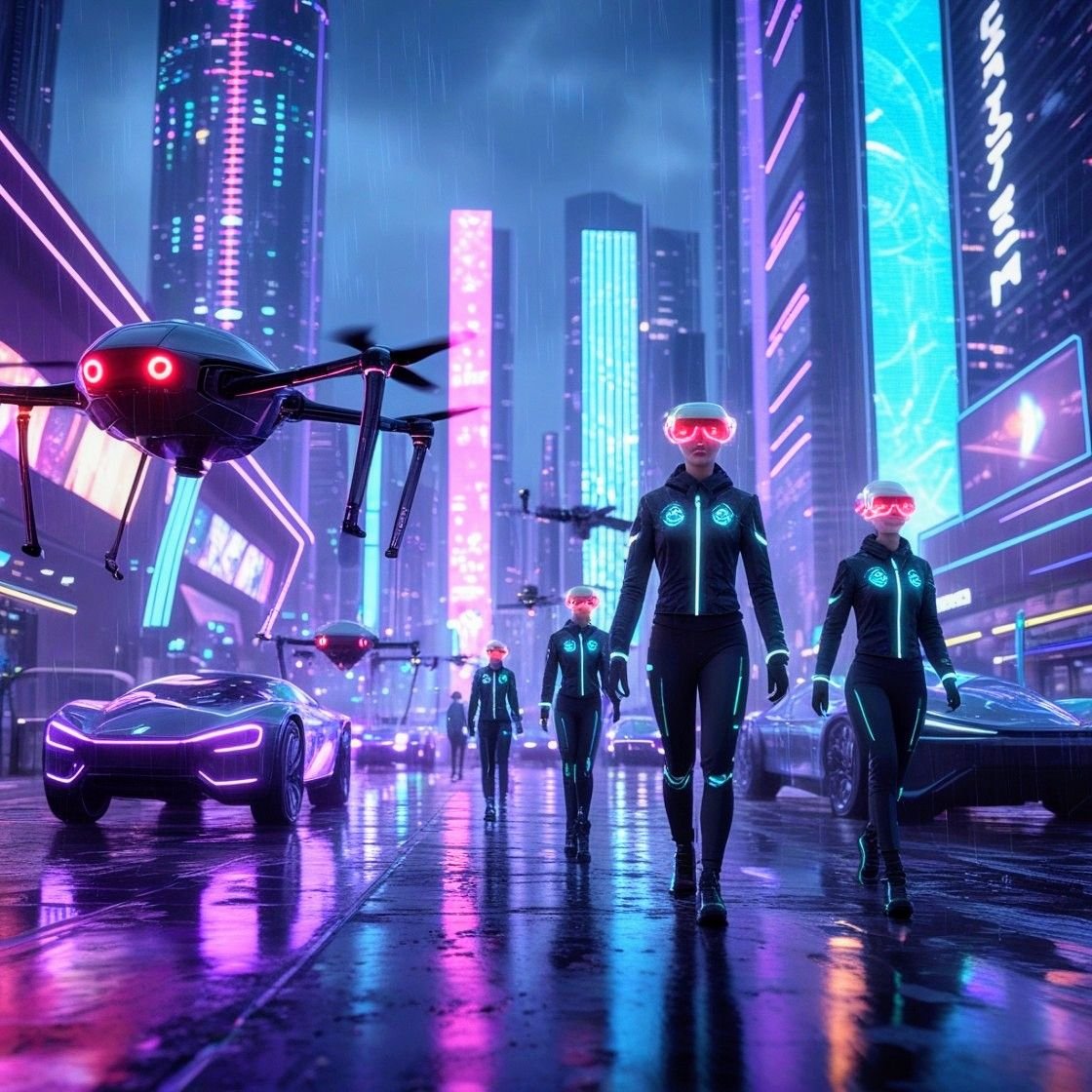AI-Generated Image. Are They Bringing Dinosaurs Back To Life With AI? by Tech Is The Culture
AI vs. Extinction: Can We Jurassic Park Our Way To Dino Domination?
Let’s face it: we’ve all secretly wanted a pet velociraptor since 1993. But while Jurassic Park gave us theme park disasters and Jeff Goldblum’s iconic chaos theory rants, real-world scientists are asking, could AI actually bridge the 65-million-year gap between us and T. rex? Spoiler: It’s complicated, messy, and involves way more chickens than you’d expect. So buckle up and lets find out the answer to the to burning question: Are they bringing dinosaurs back?
The Dinosaur DNA Dilemma: Why The Jurassic Park Mosquito Trick Won’t Work
First, the bad news: that amber-trapped mosquito from the movies? Total fiction. DNA has a half-life of 521 years, meaning after 6.8 million years, every bond is toast. Dinosaurs vanished 65 million years ago, leaving us with fossilized bones and exactly zero viable genetic blueprints.
But here’s where AI swoops in like a digital Indiana Jones. Researchers are using machine learning to analyze fragmented DNA from fossils, cross-referencing it with modern species (like birds, dinosaurs’ closest living relatives) to fill in genetic gaps. Think of it as a prehistoric jigsaw puzzle where AI guesses the missing pieces based on evolutionary patterns.
Fun fact: Paleontologist Jack Horner (the real-life Dr. Alan Grant) once joked about reverse-engineering a dinosaur from a chicken. With CRISPR, that’s kind of happening. Scientists have already given chickens dinosaur-like snouts and tails in labs. No, really.
AI’s Paleontology Playbook (Fossil Selfies To Dino CSI)
1. Fossil Instagram: AI’s Eye for Detail
Forget chisels and brushes AI is revolutionizing how we study fossils. A 2022 Frontiers study showed that deep neural networks can segment CT scans of dinosaur embryos 100x faster than humans, turning weeks of manual labor into a coffee-break task. The AI even caught fudged fossil reconstructions, proving it just might be the ultimate lab partner.
2. Satellite Safari: Finding Fossils from Space
Google Earth + AI = dinosaur treasure maps. Researchers train algorithms to spot fossil-rich regions using satellite imagery, reducing years of fieldwork to a few clicks. One team in Mongolia used this tech to uncover Protoceratops nests buried since the Cretaceous. Take that, Indiana Jones.
3. The “Dino DNA” Workaround: Since actual dinosaur DNA is MIA, scientists are using AI to simulate genomes. By comparing fossilized proteins (which survive longer than DNA) to modern animals, algorithms predict gene sequences. It’s like rebuilding a VHS tape using Netflix clips—a patchwork, but it’s progress that just might one day aid in bringing dinosaurs back to life.
Could This Be The De-Extinction Stepping Stones? (Mammoths First, T. Rex Later)
Before we Jurassic Park ourselves, science is tackling easier targets: the woolly mammoth. Harvard geneticist George Church’s team is splicing mammoth genes into elephant cells using CRISPR, aiming to birth a frost-resistant “mammophant” by 2028. The goal? Rewild Siberia to combat climate change. Because nothing says “carbon capture” like a shaggy Ice Age giant.
AI’s role? Predicting how resurrected species might impact ecosystems. Algorithms simulate everything from mammoth grazing patterns to T. rex snack preferences (spoiler: you). As Dr. Church stated, “We’re not playing God; we’re playing Zookeeper 2.0.”
Ethical Chaos May Erupt (Leading To Your Pet Dinosaur Snacking On The Neighbors)
Let’s address the elephant (or Triceratops) in the room: Should we do this?
1. Ecosystem Roulette: They were apex predators. So bringing dinosaurs back to life might be a problem. Dropping a T. rex into a modern ecosystem is like adding a flamethrower to a pillow fight. AI models predict disaster, but as one ethicist noted, “We’re great at making messes, not so great at cleaning them up.”
2. The 1% Problem: De-extinction isn’t cheap. Critics warn only wealthy nations could afford dino parks, creating a “biotech divide” where Kenya gets malaria nets and Silicon Valley gets pet raptors.
3. Animal Rights 2.0: Would a resurrected Stegosaurus have legal rights? PETA’s already side-eyeing the mammoth project.
The Chickenosaurus Chronicles Taking Baby Steps To A Dino Future
While T. rex remains a pipe dream, scientists are hacking evolution in smaller ways:
– Dino-chickens: CRISPR-edited chickens with teeth, tails, and dinosaur-like legs. They’re not Jurassic Park, but they’re a start.
– Virtual Reality Rex: Museums use AI to simulate dinosaur behavior, letting you “walk” with a VR T. rex. It’s safer than a live one, and no lawyers are required.
– Fossil Netflix: AI algorithms now generate 3D models of incomplete fossils, letting paleontologists “print” missing bones. Think of it as Ikea instructions for T. rex skeletons.
How Life Finds a Way… With a Little Help From AI
Will we ever sip coffee while a Brachiosaurus nibbles treetops? Probably not. But AI is blurring the line between sci-fi and reality, one chicken gene at a time. As Dr. Horner once said, “The future of paleontology isn’t in the ground; it’s in the lab.”
So, while we wait for CRISPR chickens to evolve into something spikier, let’s enjoy the ride. After all, if AI can turn a turkey into a dino-snack, maybe it can teach an old T. rex new tricks. Who knows? But let’s keep hope alive that AI might one day crack the code to bringing dinosaurs back to life again.
Written by a tech expert who’s still bitter about Jurassic Park’s lack of velociraptor Uber ratings.
Let us know your thoughts on the subject at techistheculture.bsky.social. Keep ahead of the game with our newsletter & the latest tech news.
Disclaimer: This article contains some AI-generated content that may include inaccuracies. Learn more [here].



